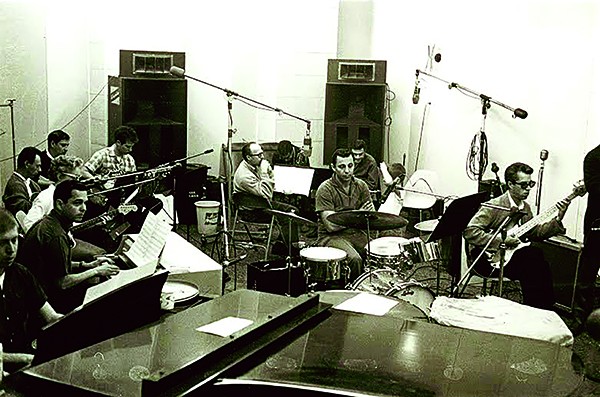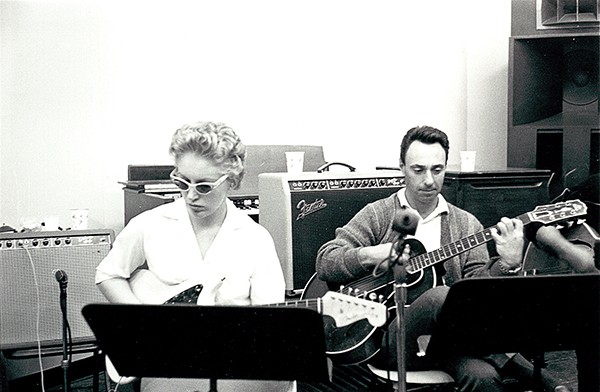
Artist David Hockney in A Bigger Splash
Tonight (Wednesday) at the Malco Powerhouse, Indie Memphis presents a groundbreaking hybrid documentary from 1974. A Bigger Splash is about a crucial period in the life of artist David Hockney. Filmmaker Jack Hazan hung out with the influential painter from 1971-1973, documenting his artistic process and, more importantly, his on-again, off-again relationship with Peter Schlesinger. This is not a fly-on-the-wall verité film of the type you might expect from other late-60s, early-70s documentarians like Les Blank, but rather a documentary hybrid with some staged scenes that the director and subject say reflected their real lives at the time. This film was banned for years in England because of its honest depiction of a homosexual relationship, but the art proved to be enduring. One of the paintings created during this period featuring Schlesinger was Portrait of an Artist (Pool With Two Figures), which set a record when it sold for $90.3 million in 2018. Showtime is at 7 p.m., with tickets available on the Indie Memphis website.
Pop Art, The Monkees, and a Social Media Tragedy This Week At The Movies
Thursday is a busy film day in the Crosstown area. At Crosstown Arts’ space at 430 Cleveland, Indie Memphis presents an explosive documentary about the infamous Stubenville High School rape case. Roll Red Roll follows online journalist Alex Goddard as she uncovers first the horrific crime of an incapacitated teenage girl whose gang rape was documented by the perpetrators on social media, then the cover-up perpetrated by football coaches and school administrators trying to protect their young athletes in the sports crazy Ohio town. Tickets are available at Indie Memphis.
Roll Red Roll – Trailer from ro*co films on Vimeo.
Pop Art, The Monkees, and a Social Media Tragedy This Week At The Movies (2)
Meanwhile at the Crosstown Theater, a decidedly stranger film from the swinging Sixties. Head started out as the Monkees’ attempt at making a film like The Beatles’ A Hard Day’s Night, but they hired Jack Nicholson to write it and, as Wikipedia puts it, “brainstormed into a tape recorder, reportedly with the aid of a quantity of marijuana.” The results are extremely weird, and much darker than what was expected from the family-friendly TV fake rock band. Tickets are $5, and the show starts at 7:30.
Pop Art, The Monkees, and a Social Media Tragedy This Week At The Movies (3)

